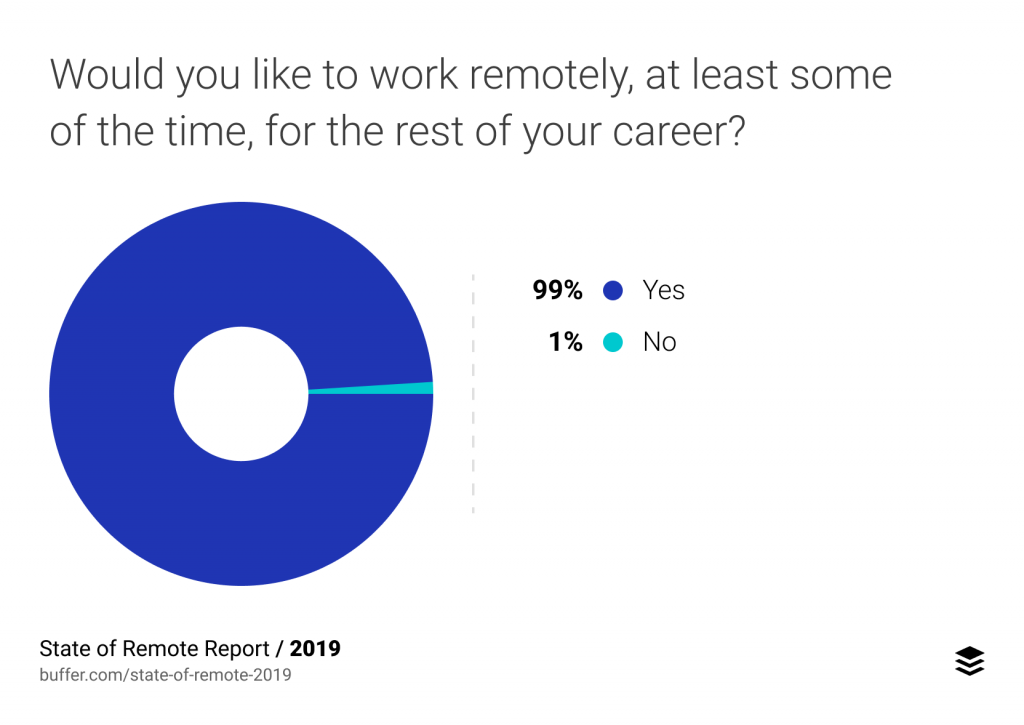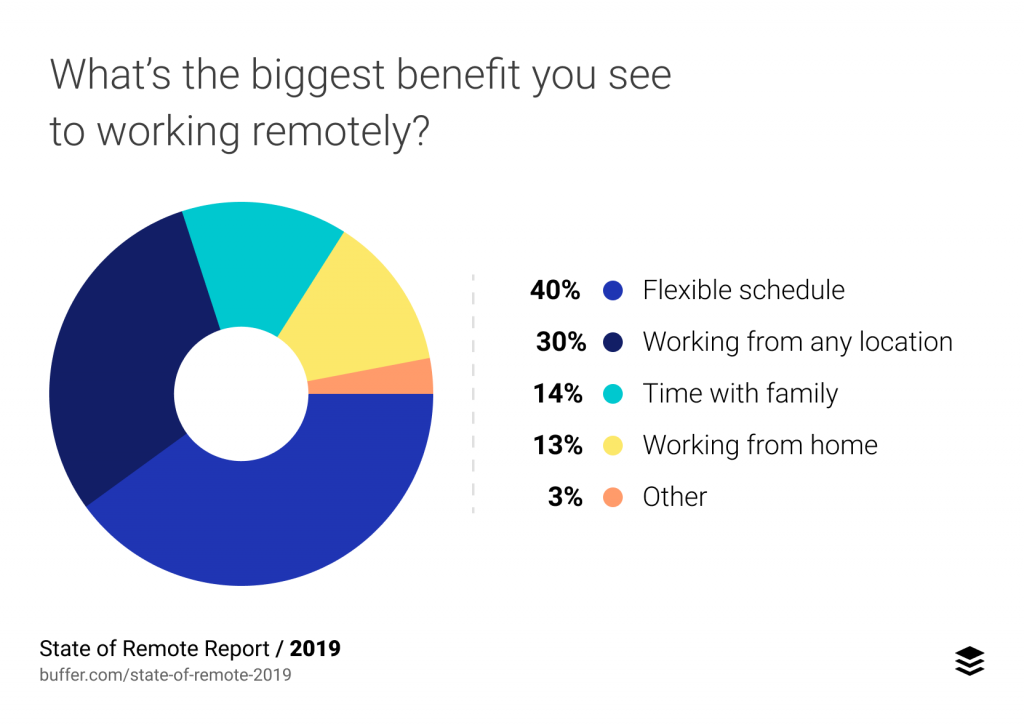Remote work, freelance work, and digital nomad lifestyle are trends that have sustained and continue growing. Working at home, or at a cottage in the Pyrenees Mountains as a freelancer is nothing new, but the magic of the internet has made telecommuting possible for many new professions. Of course, working alone has its challenges, but new information is available on how to manage a day of remote work.
State of Remote Work 2019 is an annual survey published by Buffer, an enterprise that is developing tools for social media. The survey analyses the pros and cons of working out of office. The key item of the survey was that the professionals who have gone remote, agree that it is definitely the right thing for them now and in the future. 99% of remote workers want to continue working remotely.
The Buffer survey summed up 2,471 answers submitted by remote workers primarily residing (at the moment of the survey) in North America and in Europe. The majority of respondents work in information technology, services and marketing businesses.
The advantages of remote work
The biggest benefits of remote work are flexible schedule and the possibility to work anywhere they want. This may also indicate the rise of tribe of professionals who travel the world while working: digital nomads.
The third most popular reason for remote work in the survey was time with family. We can tell from our own and from our colleagues’ experience that it should never be the reason to work at home. If you work, you can’t spend time with your family. Simple as that.
The big problem is working too much, and taking relaxing breaks
Distractions that slow down work, lack of face-to-face contacts and meetings, and poor support are challenges for remote workers. Naturally, many are not bothered with these issues at all. Nonetheless, the Buffer survey determines that unplugging after work is the biggest concern for remote workers.
Knowing when to stop working, staying away from work, and doing something else that refreshes the mind and body require firm decisions and action.
A productive day of remote work requires structure
Remote workers are constantly thinking of ways to improve their productivity. Entrepreneurs may plan outsourcing tasks to subcontractors, freelancers may plan getting better tools, writers and photographers may plan going out to the street to scout new ideas and characters for their stories.
Most important of all, productive remote work requires taking regular breaks. Quartz reports about a study by Draugiem Group that tracked employees’ work patterns in an application. It measured the time employees used on various tasks, and compared this to their output.
The company found out that the ideal schedule for best productivity in knowledge work is 52 minutes of work, and a break of 17 minutes. It was the optimal timing for a maximum level of focus in work.
Employees who followed the schedule of approximately an hour of work, followed by a break of a quarter of an hour, didn’t check Facebook and weren’t distracted by social media.
During short breaks, they could completely disconnect from work. This helped the employees to re-focus on work and continue to be productive.
The study unveiled one more important thing: the number of work hours didn’t matter much. The most important thing was how the day was structured. People who were consistent of having short breaks were more productive than those who worked longer hours.
Header photo by Parker Byrd.



